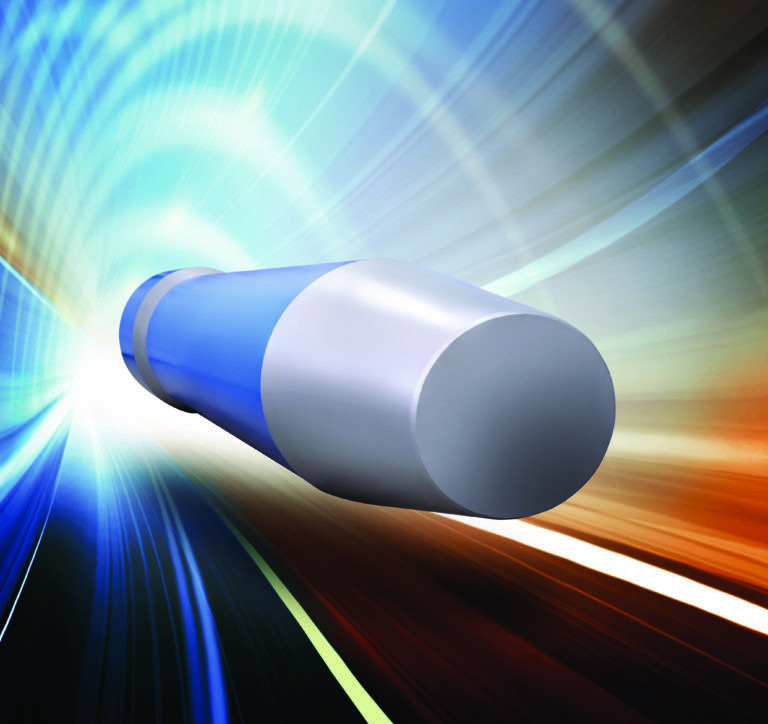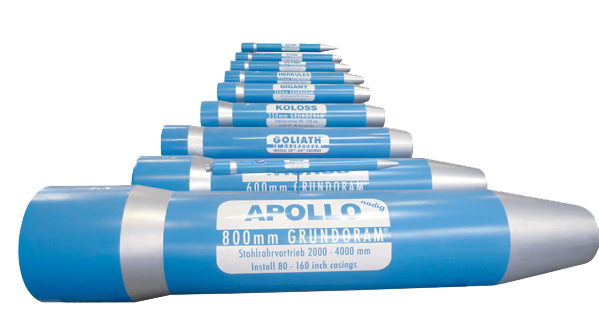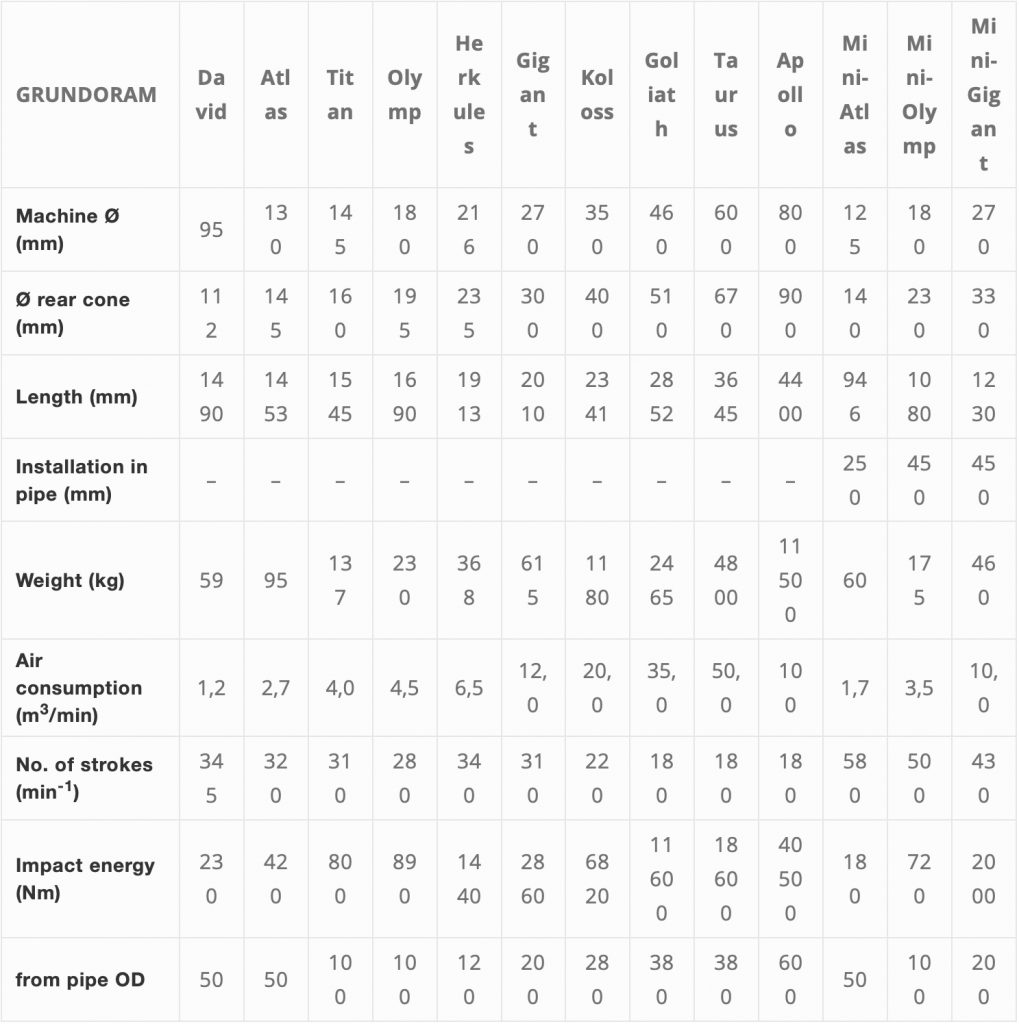DYNAMIC RAMMING EQUIPMENT
The GRUNDORAM
Technique GRUNDORAM pneumatically-driven pipe ramming machines are used for the dynamic installation of steel pipes underneath roads, waterways, railway tracks, parks and many others over lengths of up to 80m. The TT ramming technology provides a thrust forces of up to 40000Nm, enabling the economic installation of open end steel pipes up to 4000mm in diameter in soil classes 1 – 5 (in part even class 6– easily soluble rock) without the need for jacking abutments. The steel pipe ramming technique is suitable for installing longitudinally or spirally welded pipes, seamless pipes and
pipes with insulation protection as product pipes such as in pipeline construction or as casing pipes for supply and drainage pipe bundles. The pipe rammers are also used horizontally for constructing underpasses, small outlets, pipe roofs for tunnel structures and supporting HDD bores (HDD Assist) with vertical applications being used for foundations, sheet piling or well drilling.
Advantages of the technique:
- Less disruption and damage to surfaces worth conserving and minimal restoration – giving economic advantages
- Low social impact because diversions, half-sided barriers, traffic signal facilities and other disruptions are avoided
- Acknowledged pipe installation technique
- Short setting-up and installation times
- The dynamic impact when ramming can shatter obstacles and easily overcome difficult starting resistance after standstill periods. The aiming accuracy is improved because the dynamic impact penetrates various soil formations within the diameter range and obstacles do not have to be displaced or pushed aside in one piece
- No jacking abutment or auger cutter required, which could get jammed
- The soil core remains in the pipe during ramming, preventing rush of water when rivers or areas with a high water table are undercrossed
- Minimal ground covering means no large-scale pits needed
- Simple operating technique
- Adaptation to all pipe diameters with special ram cones
- Wide range of applications




Technical Data

SHARE THIS PAGE
